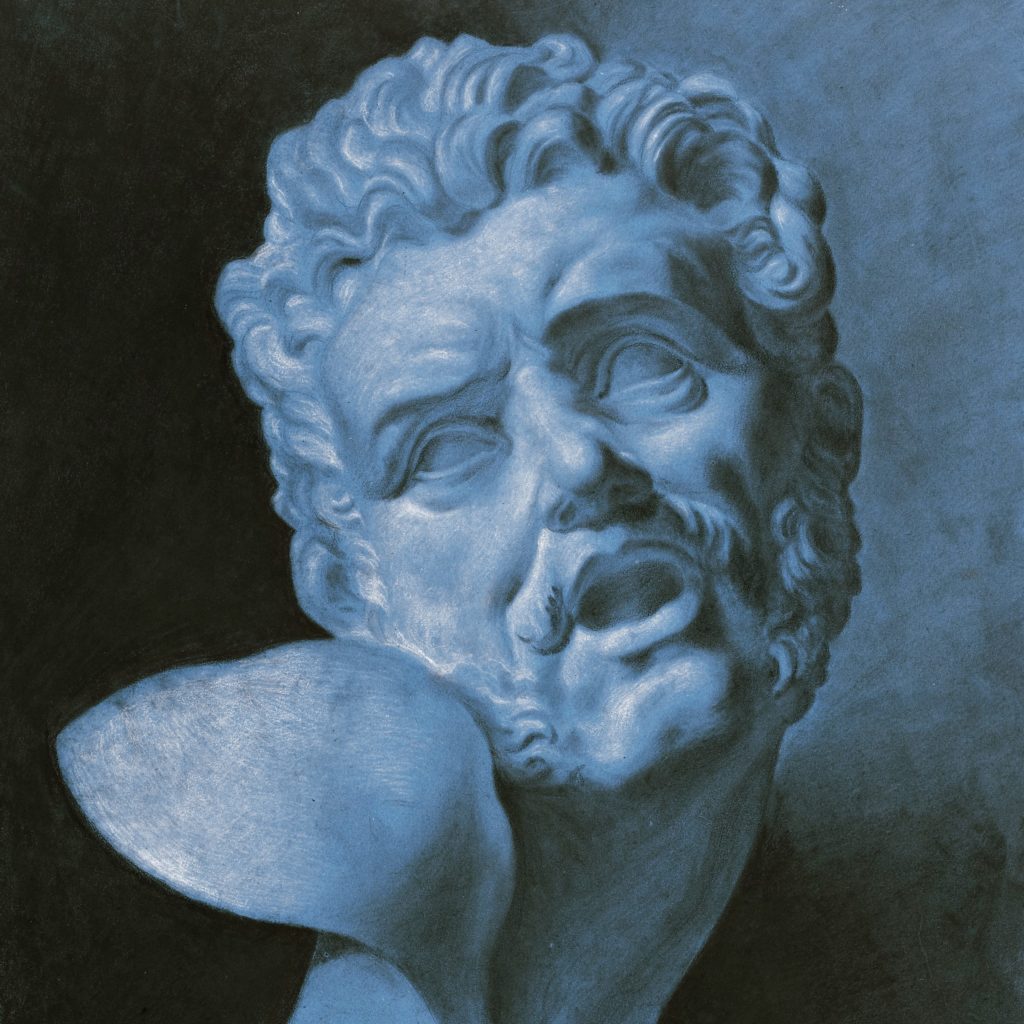This powerful sheet illustrates Naigeon’s unique approach, distinct from the academic classical style. As a young boy from a modest family, Naigeon’s talent and enthusiastic persistence lead him to enter the free art school of Dijon, where he was trained in drawing and painting by François Devosge.[1] This period of teaching was paramount to the development of Naigeon’s technical and stylistic virtuosity. Encouraged by Devosge, Naigeon learnt to draw by copying master drawings and drawing from les bosses – plaster casts made from antique and modern sculptures. This exercise of mimicking three-dimensional models on a flat surface was a traditional form of art training in the eighteenth century. Devosge encouraged his pupils to make such studies on coloured paper. He believed that the coloured paper would enhance the expression of volume due to the wider range of applied hues, by working towards light and dark simultaneously.[2]
This sheet is a fine example of such an illusionistic study on blue paper. The drawing illustrates the head of Milo of Croton, a plaster cast made after the head of a sculpture[3] by the French seventeenth-century sculptor Pierre Puget, showing an encounter between the Olympic wrestler and a lion. Caught in the most intense moment of the classical drama, the face of Milo demonstrates the expression of stoic pain to perfection. Intrigued by the physical and moral virtues of man, such classical themes would recur in Naigeon’s oeuvre.[4] The academic technique, instinctive style and expressive freedom make Naigeon a master neoclassical artist. Yet despite being winner of the Rome Prize of Bourgogne in 1780, his oeuvre is still not well known. Regardless, this drawing is remarkable for its artistic quality and for its insight into Naigeon’s vision.
The current sheet was part of a portfolio of
46 drawings which remained in the ownership of the artists’ family until
2012. Despite its existence being known, the collection was first
shown during an exhibition at the galerie
Motte Masselink in Paris (2012), hence the remarkably pristine
conservation of the sheet.
[1] The two became lifelong friends and would frequently correspond about their journeys and artistic efforts (Masselinck et al., 2012, pp. 11-12).
[2] Devosge himself seemed to prefer the blue tinted paper, which he used for his own studies. Naigeon would continue to use tinted paper for his studies throughout his career (Masselinck et al., 2012, p. 14).
[3] The sculpture is at the Musée du Louvre, Paris.
[4] Masselinck et al., 2012, p. 22.







